
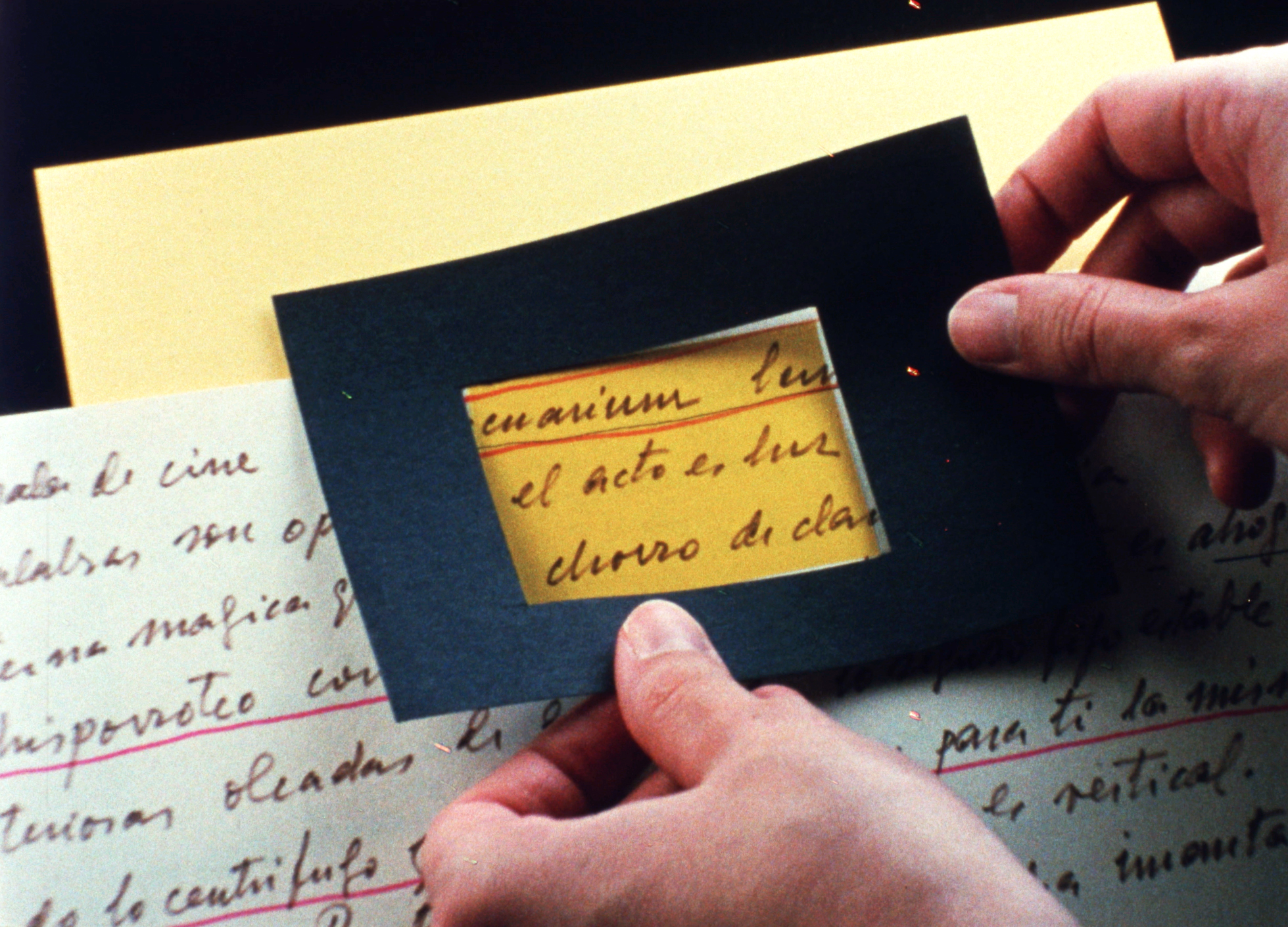
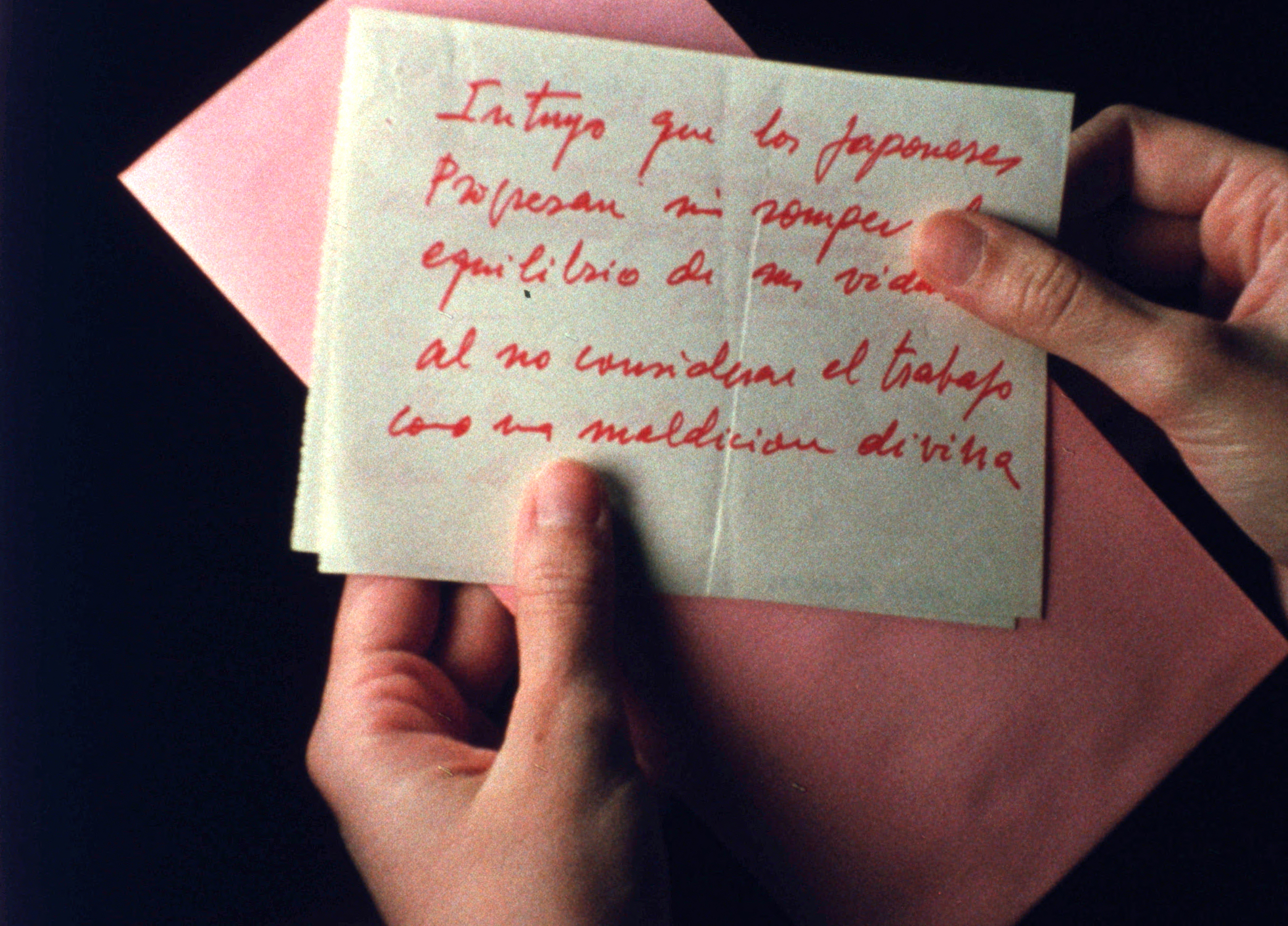
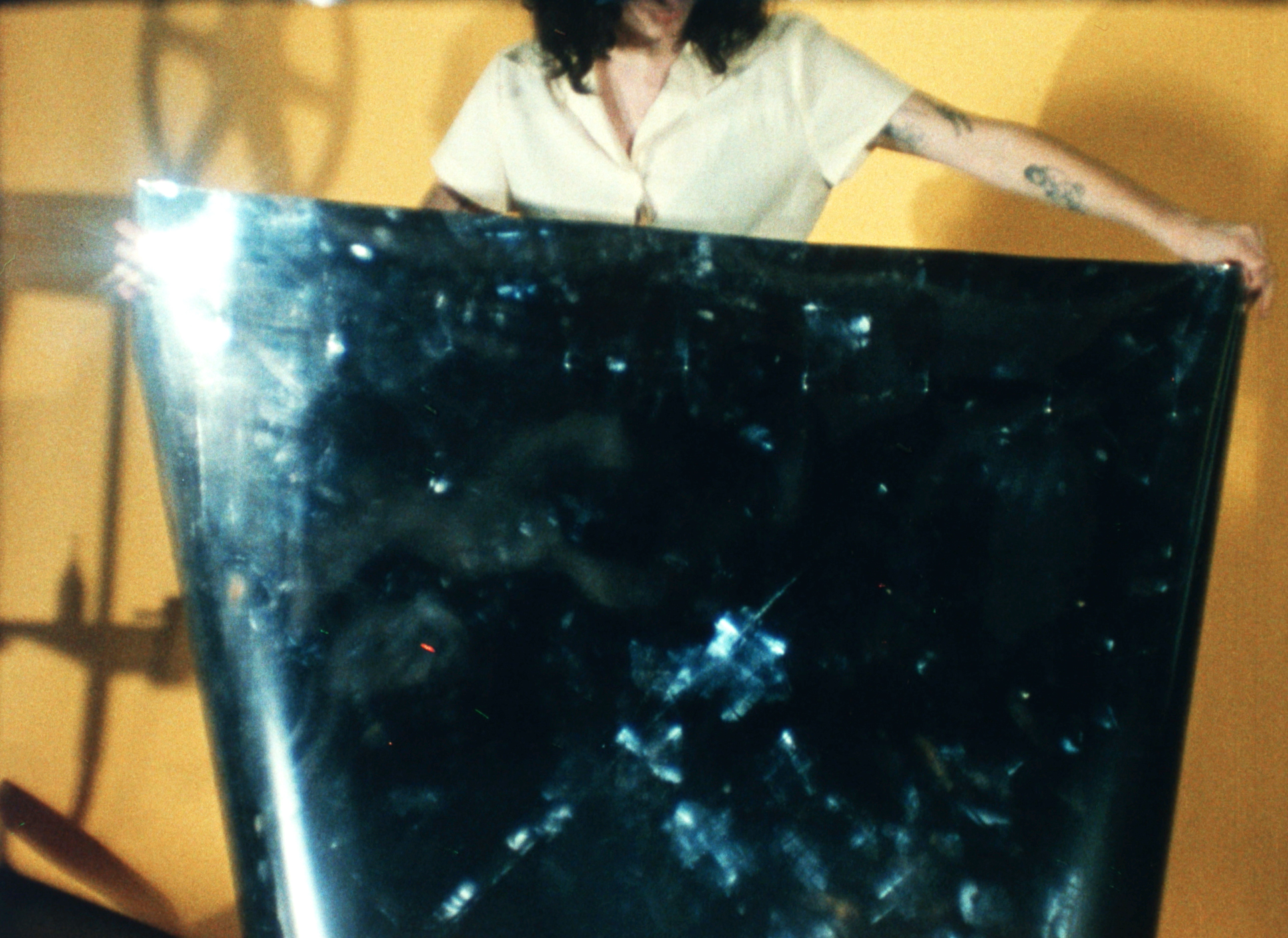
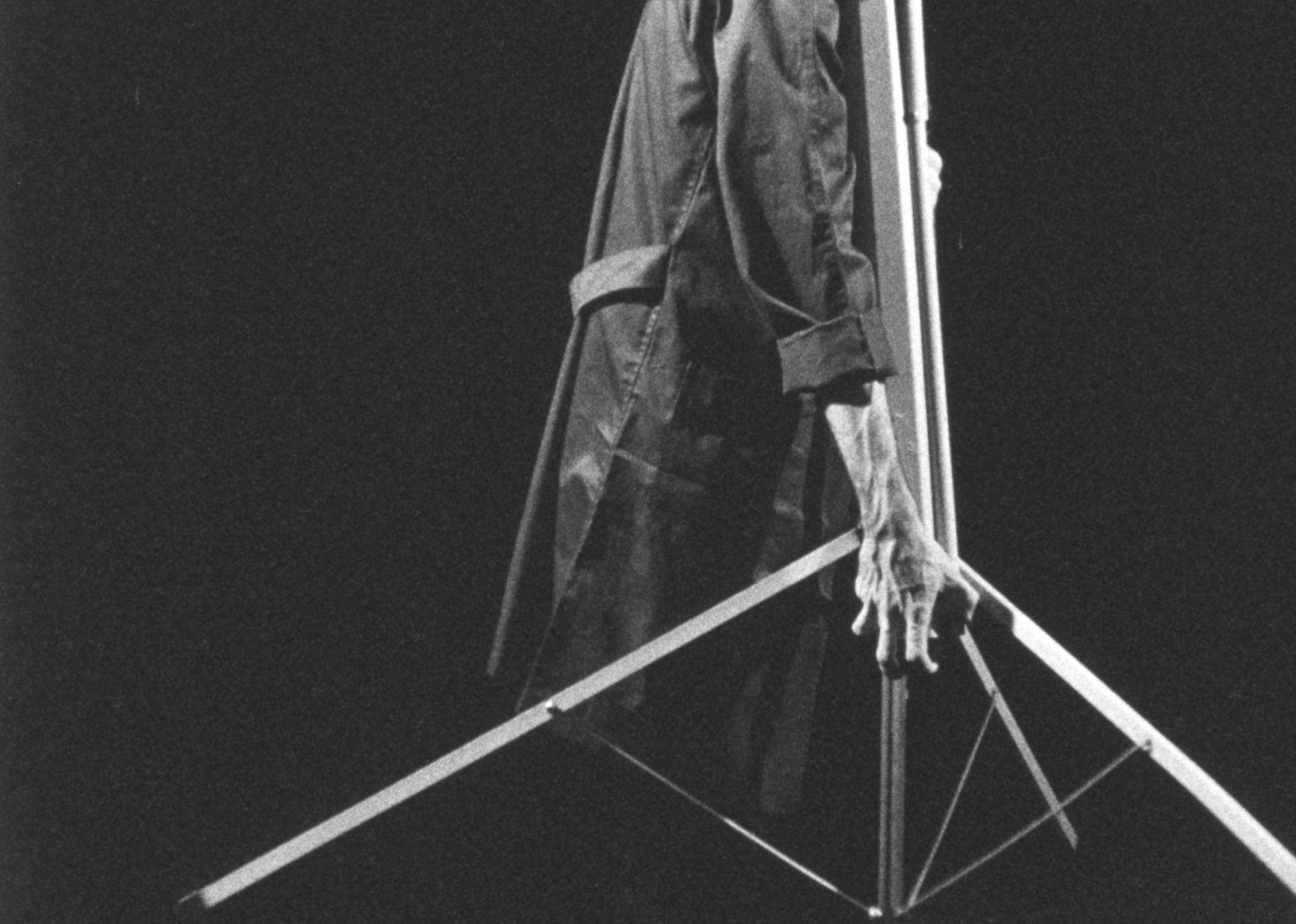
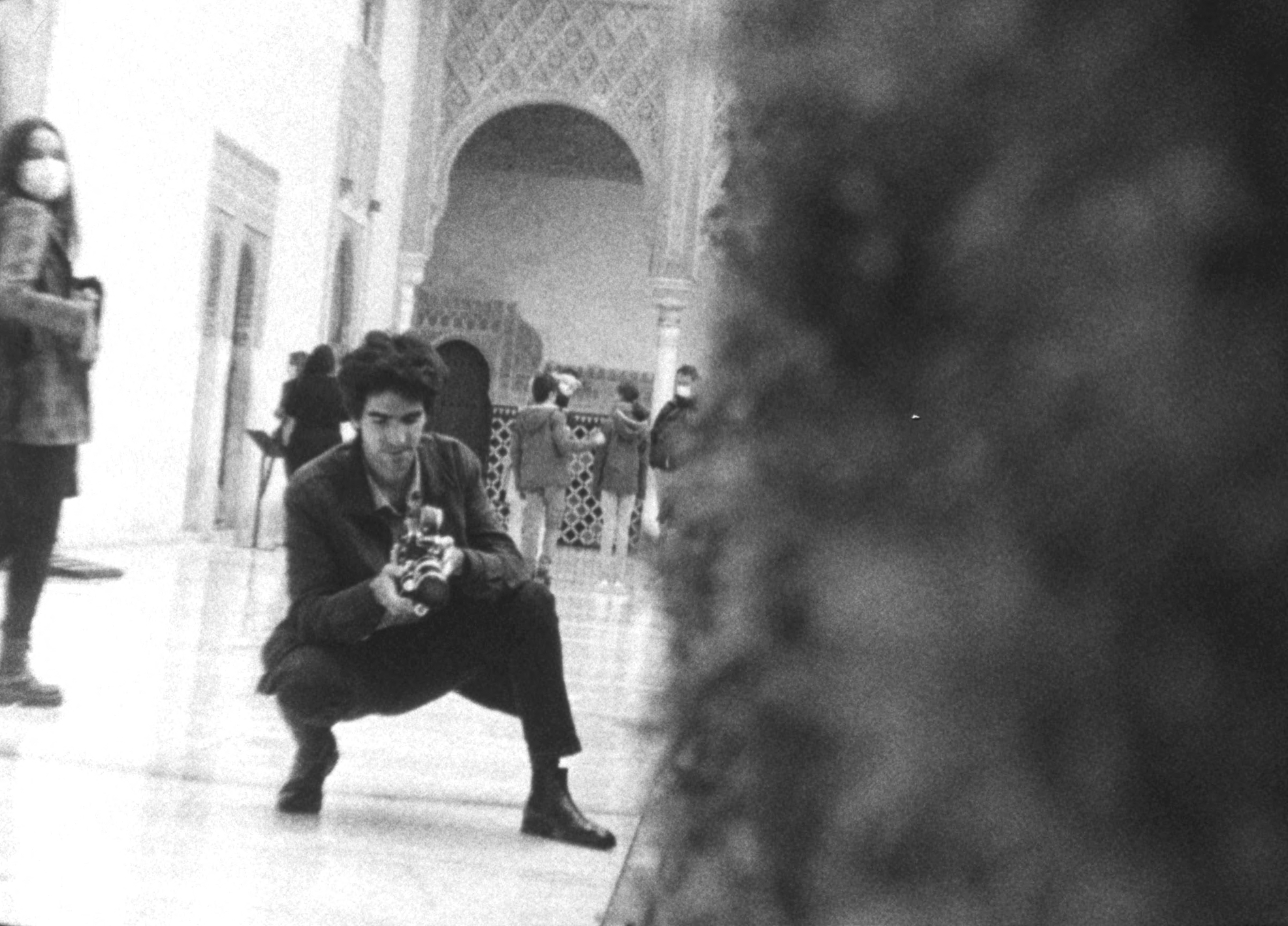
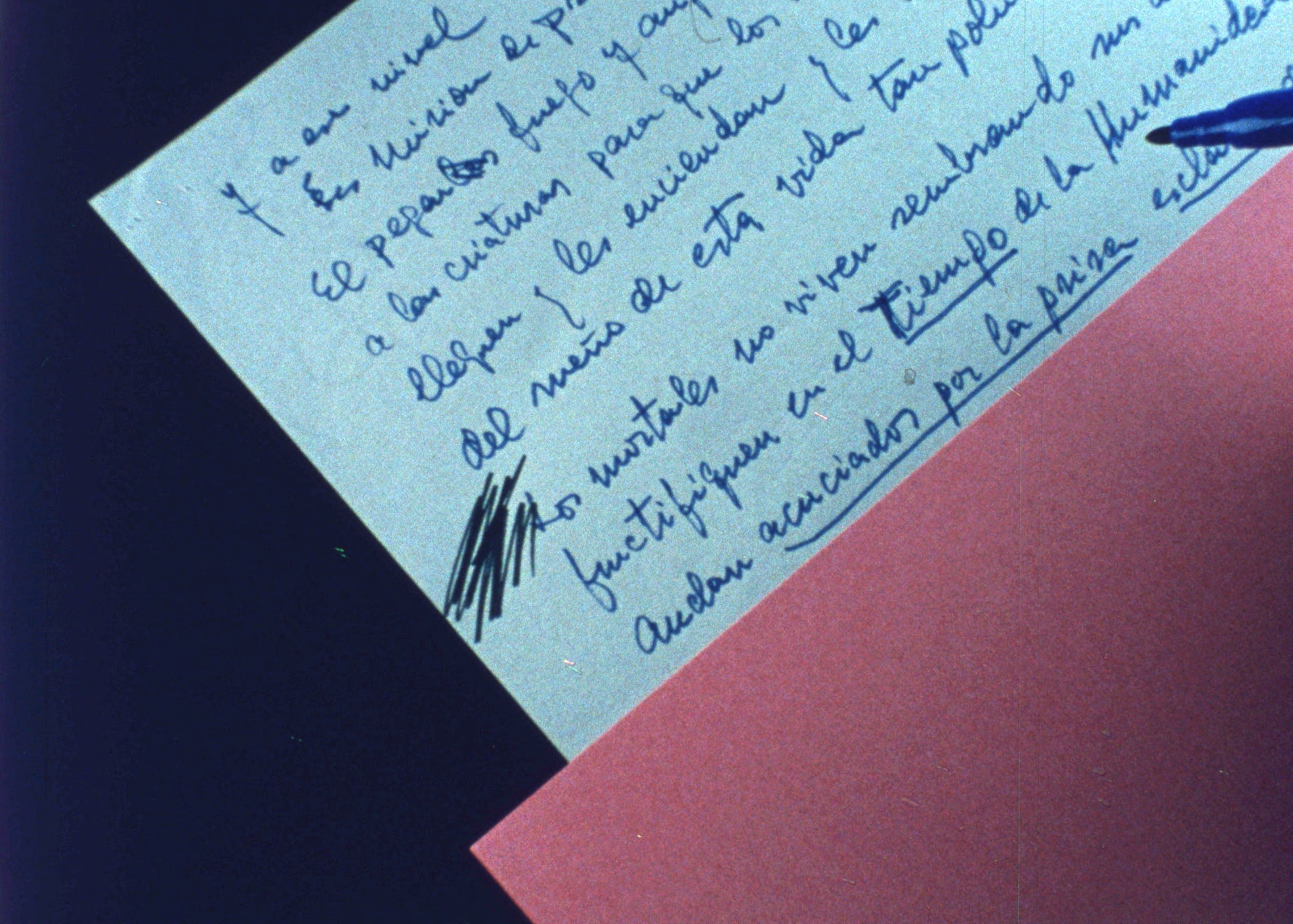
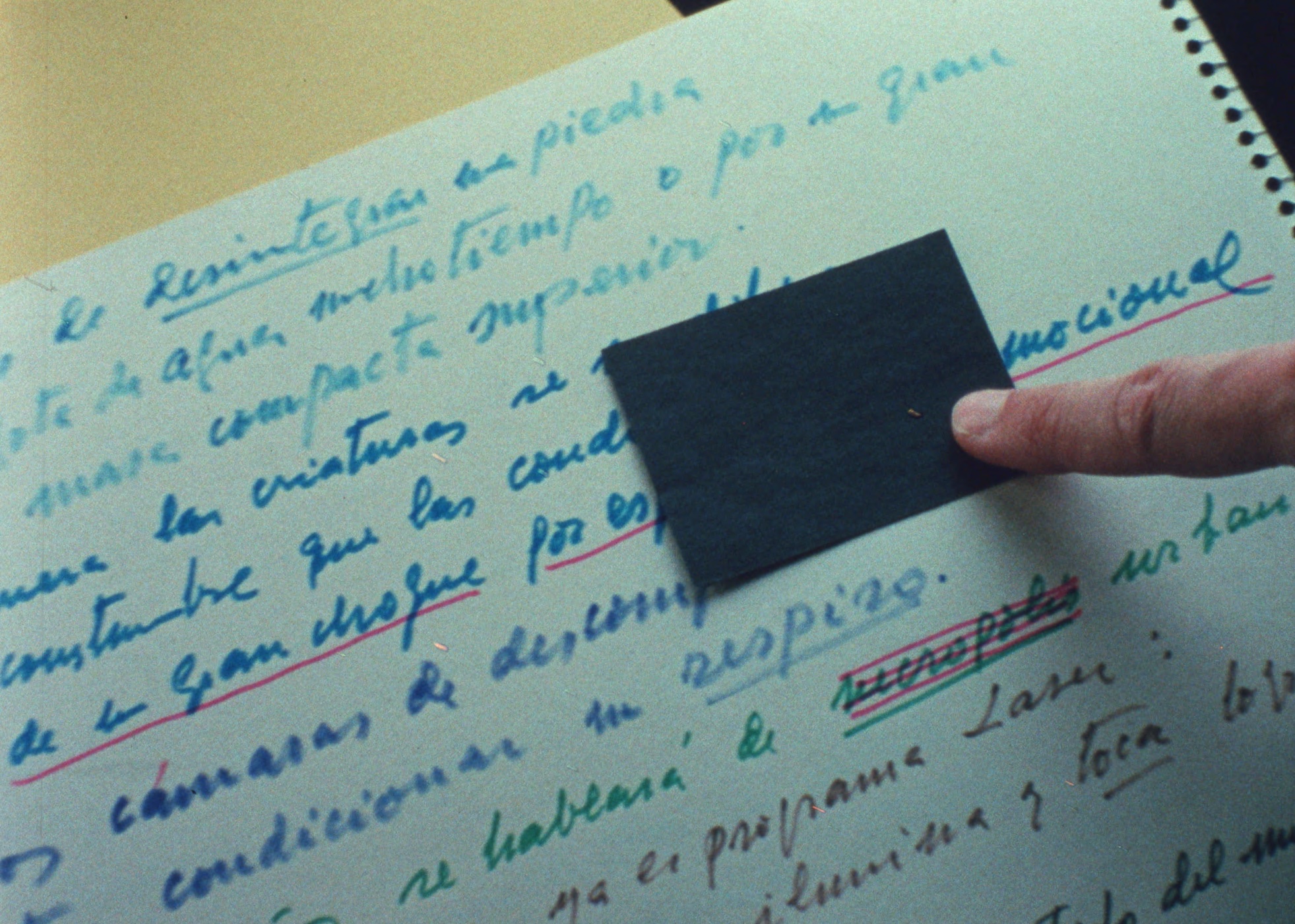
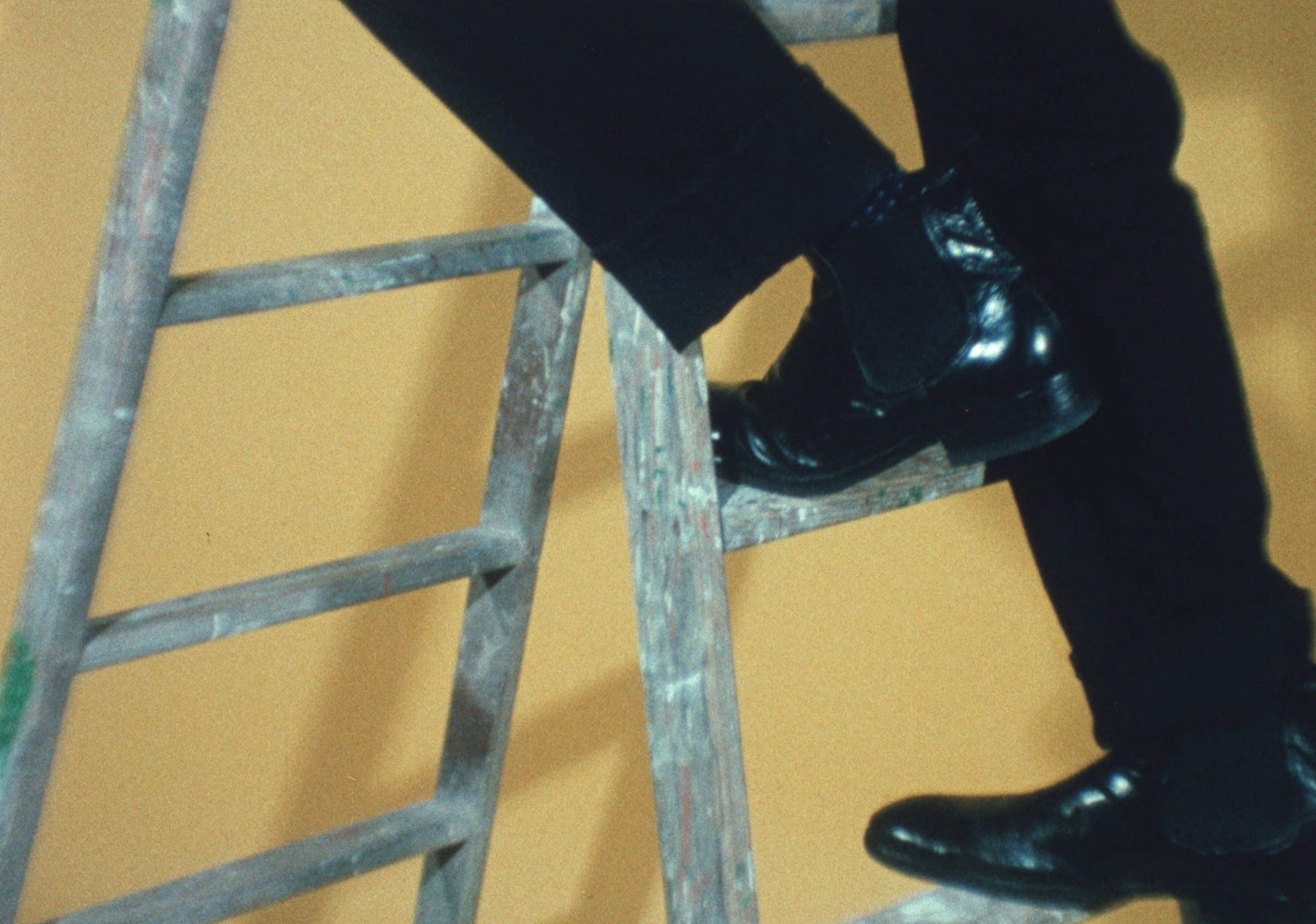
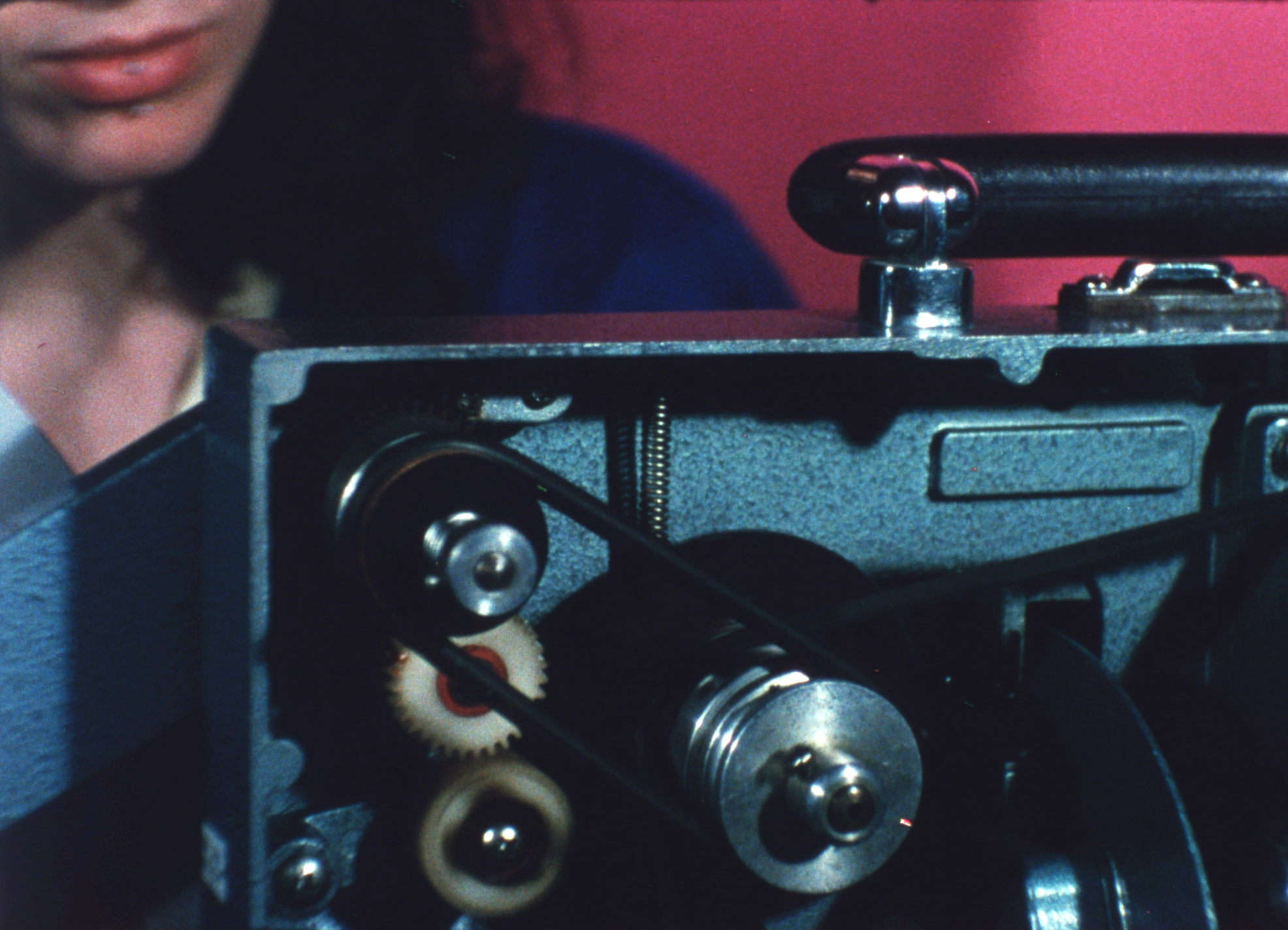
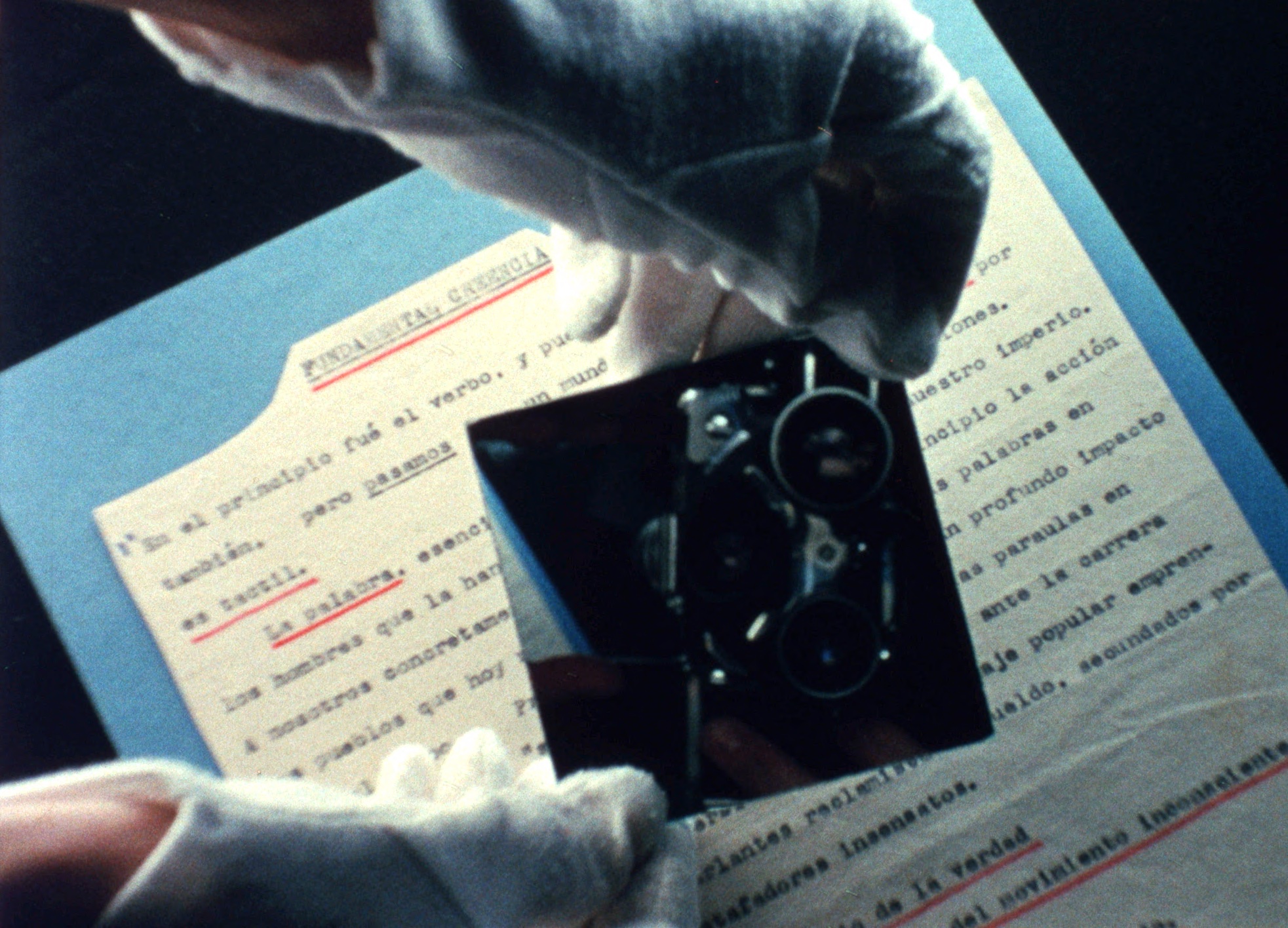
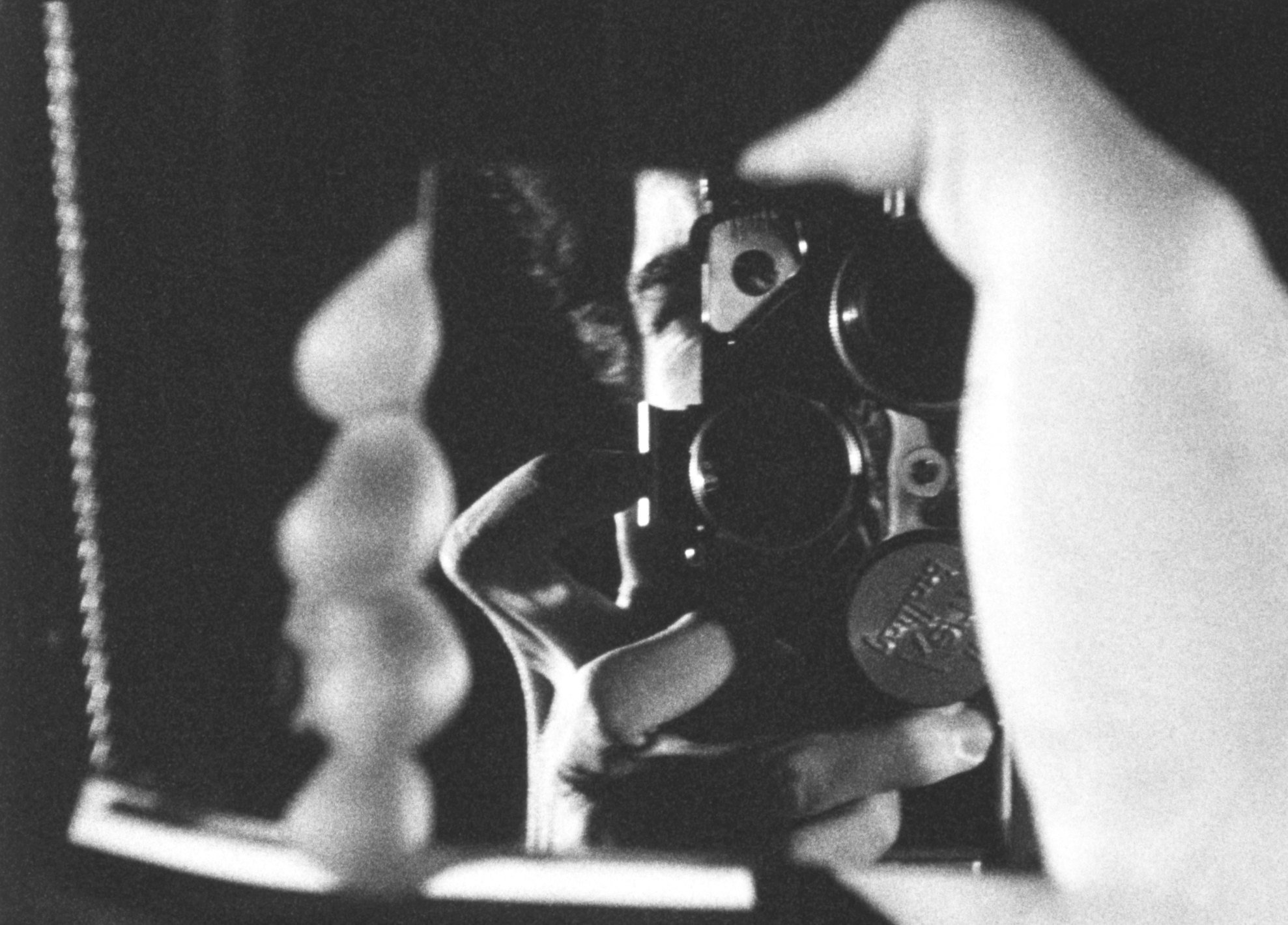
2023
Film installation
2 looped films (16mm, 12:40 mins each, colour and b/w, silent), suspended screen
Shot with Bruno Delgado Ramo
Featuring Paula Guerrero
A commissioned work for the exhibition Cinema of Sensations: the Neverending Screen of Val del Omar (March — October 2023), curated by Almudena Escobar, Museum of the Moving Image, New York
Two twin films projected on the two sides of a screen invite the viewer into a circular experience of perception. The single point of view has been deconstructed, implicating the body into a complex cinematic space. The film revolves around some of the most persistent preoccupations about perception Spanish filmmaker and inventor of 20th century José Val del Omar expressed in his writings. In the running of any analogue film, the camera’s shutter is closed during half of the time, so, technically, any given film can only capture half of what took place. Therefore, for every film that is created, there is always 'another cinema’ of equal length that could have been made during the intervals. The complementarity of the twin films that form Trágame nube is based in this logic.
The film has a three-part structure. The first part is a play tag with filmmaker Bruno Delgado Ramo at the Alhambra palace in Granada, where Val del Omar shot Aguaespejo granadino (1955). The second and central part of the film is entirely devoted to a selection of Val del Omar’s original documents held at the library of the MNCARS in Madrid, composed mostly of notes, project drawings, sketches, letters, written material for lectures and press clippings. The film apparatus presented on the third part of the film was shot in Bilbao and presents the syntax of cinema as sculpture and performance in a loose association with Val del Omar's emblematic studio PLAT.
Val del Omar’s writings, works and projects emphasised the importance of engaging the viewer's body and senses in the cinematic experience. In his work, he often explored the relationship between the body and the film apparatus –ie. his ‘Tactilevisión’ project–, challenging conventional ideas of how films should be viewed and experienced. He believed that the human body was a crucial element in the creation and reception of art, and that film had the potential to activate the viewer's senses and engage them in what he called ‘commotional cinema”. In ‘Trágame, nube, Val del Omar's interest in the body is reflected in ways that are inseparable from the body of cinema, inviting viewers to reconsider how their own bodies interact with the films they watch.